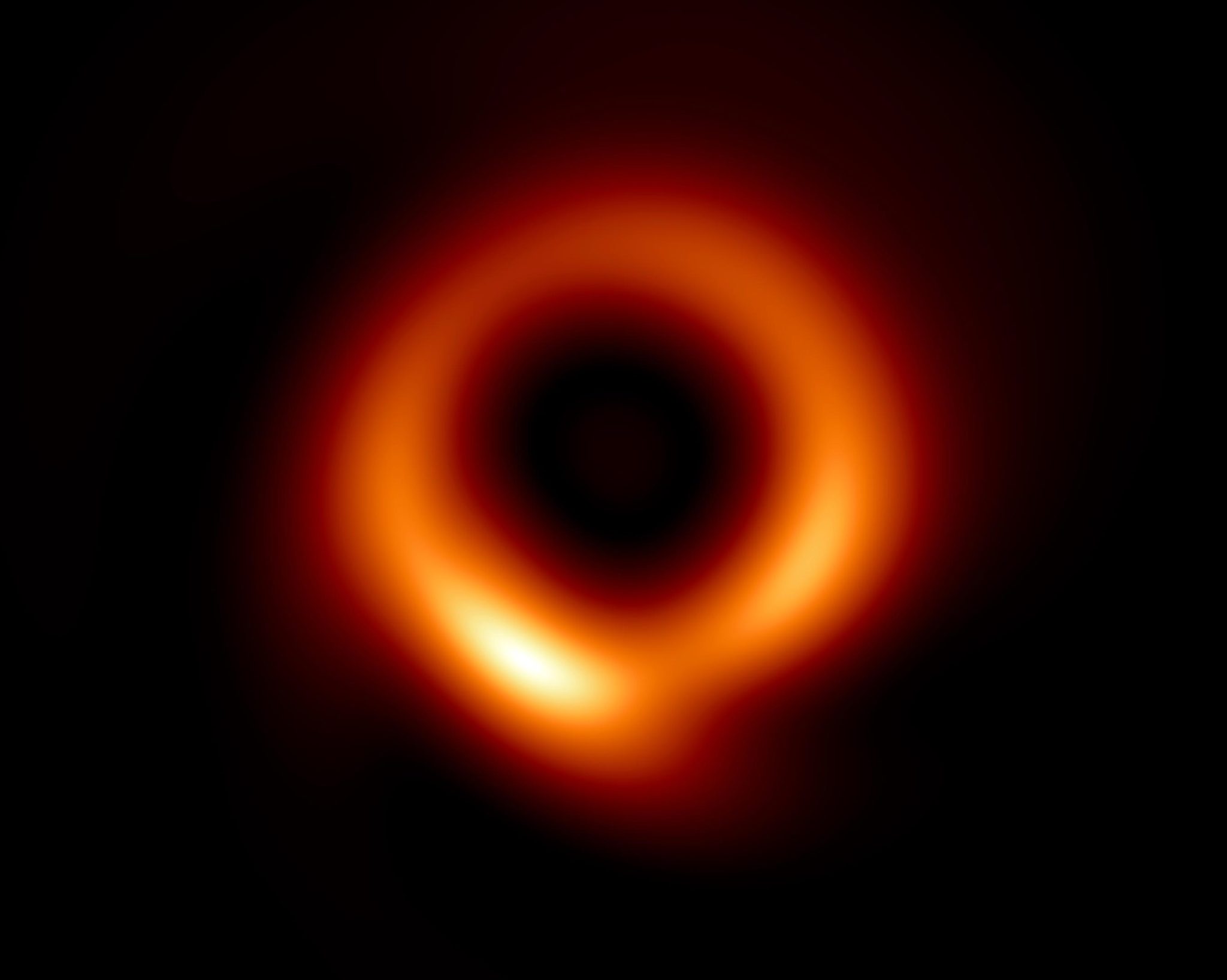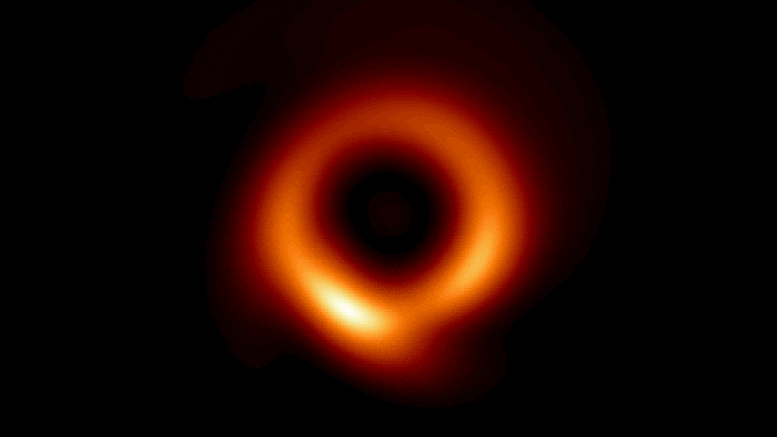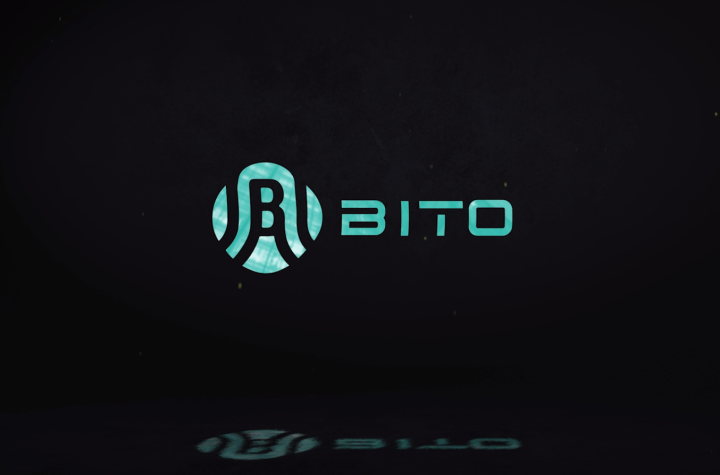
2017년 EHT 데이터를 사용하여 PRIMO 알고리즘으로 생성한 M87 초대질량 블랙홀의 새로운 이미지. 신용: Medeiros 외. 2023년
기계 학습은 EHT 데이터에서 새로운 그림을 재구성합니다.
M87의 사진[{” attribute=””>black hole has been enhanced using a machine learning technique called PRIMO, providing a more accurate representation and allowing for improved determinations of its mass and physical parameters.
The iconic image of the supermassive black hole at the center of M87—sometimes referred to as the “fuzzy, orange donut”—has gotten its first official makeover with the help of machine learning. The new image further exposes a central region that is larger and darker, surrounded by the bright accreting gas shaped like a “skinny donut.” The team used the data obtained by the Event Horizon Telescope (EHT) collaboration in 2017 and achieved, for the first time, the full resolution of the array.
In 2017, the EHT collaboration used a network of seven pre-existing telescopes around the world to gather data on M87, creating an “Earth-sized telescope.” However, since it is infeasible to cover the Earth’s entire surface with telescopes, gaps arise in the data—like missing pieces in a jigsaw puzzle.

M87 supermassive black hole originally imaged by the EHT collaboration in 2019 (left); and new image generated by the PRIMO algorithm using the same data set (right). Credit: Medeiros et al. 2023
“With our new machine learning technique, PRIMO, we were able to achieve the maximum resolution of the current array,” says lead author Lia Medeiros of the Institute for Advanced Study. “Since we cannot study black holes up close, the detail of an image plays a critical role in our ability to understand its behavior. The width of the ring in the image is now smaller by about a factor of two, which will be a powerful constraint for our theoretical models and tests of gravity.”
PRIMO, which stands for principal-component interferometric modeling, was developed by EHT members Lia Medeiros (Institute for Advanced Study), Dimitrios Psaltis (Georgia Tech), Tod Lauer (NOIRLab), and Feryal Özel (Georgia Tech). Their publication, “The Image of the M87 Black Hole Reconstructed with PRIMO,” was published today (April 13) in The Astrophysical Journal Letters.
“PRIMO is a new approach to the difficult task of constructing images from EHT observations,” said Lauer. “It provides a way to compensate for the missing information about the object being observed, which is required to generate the image that would have been seen using a single gigantic radio telescope the size of the Earth.”

Animation fades from M87 black hole image, first produced by the EHT collaboration in 2019, to the new image generated by the PRIMO algorithm using the same data set. Credit: Medeiros et al. 2023
PRIMO relies on dictionary learning, a branch of machine learning which enables computers to generate rules based on large sets of training material. For example, if a computer is fed a series of different banana images—with sufficient training—it may be able to determine if an unknown image is or is not a banana. Beyond this simple case, the versatility of machine learning has been demonstrated in numerous ways: from creating Renaissance-style works of art to completing the unfinished work of Beethoven. So how might machines help scientists to render a black hole image? The research team has answered this very question.
With PRIMO, computers analyzed over 30,000 high-fidelity simulated images of black holes accreting gas. The ensemble of simulations covered a wide range of models for how the black hole accretes matter, looking for common patterns in the structure of the images. The various patterns of structure were sorted by how commonly they occurred in the simulations, and were then blended to provide a highly accurate representation of the EHT observations, simultaneously providing a high fidelity estimate of the missing structure of the images. A paper pertaining to the algorithm itself was published in The Astrophysical Journal on February 3, 2023.
“We are using physics to fill in regions of missing data in a way that has never been done before by using machine learning,” added Medeiros. “This could have important implications for interferometry, which plays a role in fields from exo-planets to medicine.”
PRIMO 알고리즘 학습 세트에 대해 생성된 시뮬레이션의 개요입니다. 신용: Medeiros 외. 2023년
연구팀은 새로 제공된 이미지가 EHT 데이터와 블랙홀로 떨어지는 뜨거운 가스로 인해 발생할 것으로 예상되는 방출의 밝은 고리를 포함하여 이론적 예측과 일치함을 확인했습니다. 이미지를 생성하려면 누락된 정보의 적절한 모양을 가정해야 하며, PRIMO는 2019년 M87 블랙홀의 방대한 세부 정보가 예측한 대로 보인다는 발견을 기반으로 이를 수행했습니다.
Psaltis는 “2019년 EHT가 블랙홀의 첫 수평 스케일 이미지를 공개한 지 거의 4년 만에 처음으로 매트릭스의 전체 해상도를 사용하는 이미지를 생성하는 또 다른 이정표를 세웠습니다.”라고 말했습니다. “우리가 개발한 새로운 기계 학습 기술은 블랙홀의 물리학을 이해하기 위한 공동 작업에 절호의 기회를 제공합니다.”
새로운 이미지는 M87 블랙홀의 질량과 현재 모습을 결정하는 물리적 매개변수에 대한 보다 정확한 결정으로 이어질 것입니다. 이 데이터는 또한 연구자들이 이벤트 호라이즌 대안에 더 큰 제약을 가하고(낮은 어두운 중앙 밝기를 기반으로) 더 강력한 중력 테스트를 수행할 수 있는 기회를 제공합니다(더 좁은 링 크기를 기반으로). PRIMO는 또한 우리 지역의 중앙 블랙홀인 Sgr A*를 포함하여 추가 EHT 관측에 적용될 수 있습니다.[{” attribute=””>Milky Way galaxy.
M87 is a massive, relatively nearby, galaxy in the Virgo cluster of galaxies. Over a century ago, a mysterious jet of hot plasma was observed to emanate from its center. Beginning in the 1950s, the then new technique of radio astronomy showed the galaxy to have a compact bright radio source at its center. During the 1960s, M87 had been suspected to have a massive black hole at its center powering this activity. Measurements made from ground-based telescopes starting in the 1970s, and later the Hubble Space Telescope starting in the 1990s, provided strong support that M87 indeed harbored a black hole weighing several billion times the mass of the Sun based on observations of the high velocities of stars and gas orbiting its center. The 2017 EHT observations of M87 were obtained over several days from several different radio telescopes linked together at the same time to obtain the highest possible resolution. The now iconic “orange donut” picture of the M87 black hole, released in 2019, reflected the first attempt to produce an image from these observations.
“The 2019 image was just the beginning,” stated Medeiros. “If a picture is worth a thousand words, the data underlying that image have many more stories to tell. PRIMO will continue to be a critical tool in extracting such insights.”
Reference: “The Image of the M87 Black Hole Reconstructed with PRIMO” by Lia Medeiros, Dimitrios Psaltis, Tod R. Lauer and Feryal Özel3, 13 April 2023, The Astrophysical Journal Letters.
DOI: 10.3847/2041-8213/acc32d
Development of the PRIMO algorithm was enabled through the support of the National Science Foundation Astronomy and Astrophysics Postdoctoral Fellowship.

“음악 팬. 매우 겸손한 탐험가. 분석가. 여행 괴짜. 익스트림 TV 전문가. 게이머.”








More Stories
거대한 블랙홀에서 한 쌍의 거대한 플라즈마 제트가 발사되는 것이 목격되었습니다. 블랙홀
SpaceX는 희귀하고 위험한 착륙으로 Falcon 9 로켓을 벼랑 끝으로 밀어 넣습니다.
하베스트 문(Harvest Moon)과 슈퍼문(Super Moon)이 부분 월식을 가져온다: 언제, 어떻게 시청해야 하는가 | 우주 뉴스